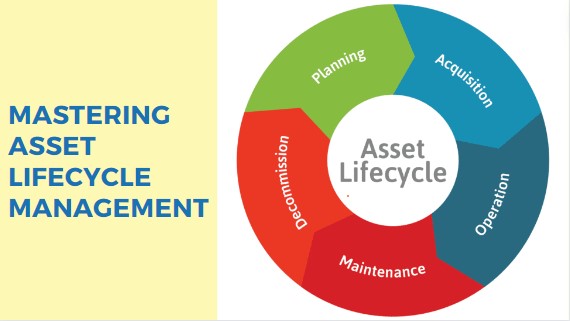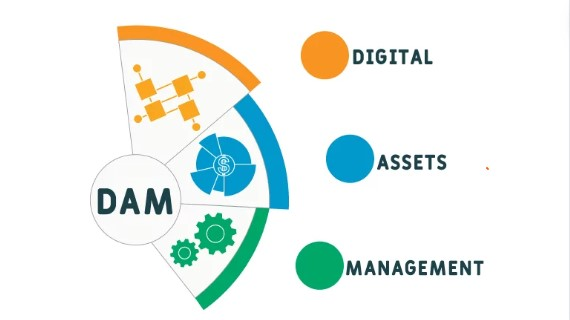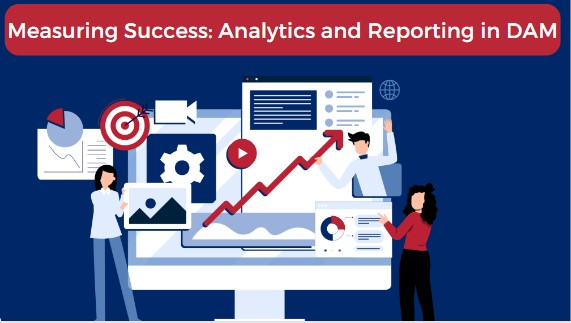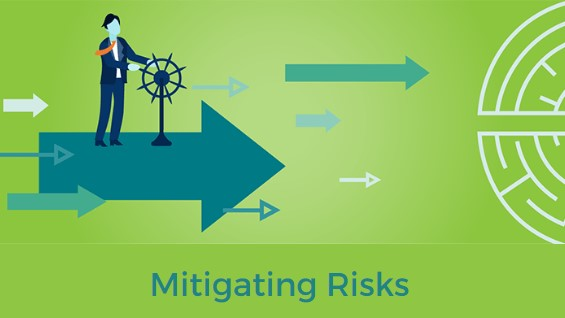
Benefits of Digital Asset Management
Madhurima Sanyal |
25 Feb 2024 |
16:57 PM
- Brief overview of digital asset management (DAM)
- Importance of effective digital asset management in modern business operations
- Understanding Digital Asset Management
- Types of DAM systems
- Why Digital Asset Management Matters
- Why is digital asset management important for your business?
- Maximizing the Benefits of Digital Asset Management
- The Future of Digital Asset Management
- How to Get Started with Digital Asset Management
- Conclusion

Asset Lifecycle Management - Best Practices
Madhurima Sanyal 21 Feb 2024 | 12:40 PMExplore the art of optimizing assets with our comprehensive guide to Asset Lifecycle Management Best Practices. Unlock efficiency and elevate performance with strategic insights for managing assets throughout their lifecycle...
Brief overview of digital asset management (DAM)
Digital Asset Management (DAM) serves as a cornerstone in the modern landscape of business operations, offering a systematic approach to organizing, storing, and distributing digital assets. In this current digital age, where businesses generate and utilize vast amounts of digital content, effective management of these assets is key for success.
Importance of effective digital asset management in modern business operations
A digital asset management system provides a centralized hub for storing diverse digital files, ranging from images and videos to documents and presentations. By streamlining access to these assets, enterprise companies can enhance collaboration, ensure consistent brand message, and compliance with data protection regulations.

In this dynamic environment, where digital transformation is accelerating, DAM solutions enable organizations to efficiently share assets, execute marketing campaigns, and empower the marketing team. In this blog we will explore deeper into the host of benefits and functionalities of digital asset management.
Understanding Digital Asset Management
What constitutes a digital asset?
Digital assets encompass a broad spectrum of content, including images, videos, audio files, documents, presentations, and more. Essentially, any content that is created, stored, and utilized in digital format qualifies as a digital asset.
What is digital asset management?
Digital Asset Management (DAM) refers to the systematic organization, storage, retrieval, and distribution of digital assets within an organization. DAM systems provide a centralized platform for managing these assets throughout their lifecycle, from creation to archiving.
Types of DAM systems
DAM systems come in various forms to cater to diverse business needs. These include:
-
On-premises DAM solutions: Installed and maintained on-site by the organization's IT infrastructure.
-
Cloud-based DAM systems: Hosted on remote servers, offering scalability, accessibility, and flexibility.
-
Open-source DAM software: Customizable solutions that provide greater control over features and functionalities.
-
Enterprise DAM platforms: Comprehensive solutions designed to meet the complex requirements of large-scale organizations. Each type offers unique features and benefits, allowing businesses to choose the most suitable option based on their specific requirements and preferences.
Why Digital Asset Management Matters

Why is digital asset management important for your business?
Effective management of digital assets is crucial for maintaining a competitive edge. A digital asset management system streamlines the organization, storage, and retrieval of digital files, ensuring quick and easy access to valuable content when needed. This not only enhances productivity but also improves collaboration among teams by providing a centralized platform for sharing assets.
Key benefits of digital asset management solution
Improved Brand Consistency: A DAM system ensures that all digital assets adhere to brand guidelines, promoting consistency across marketing assets and customer touchpoints.
Enhanced Efficiency: By centralizing digital asset management, businesses can save time and resources spent searching for files, leading to increased productivity.
Compliance with Data Protection Regulations: DAM solutions help organizations adhere to data protection regulations by implementing access controls and tracking asset usage, minimizing compliance risk.
Streamlined Marketing Campaigns: With easy access to marketing content and assets, teams can execute campaigns more efficiently, ensuring a cohesive message and better engagement with the audience.
Facilitated Collaboration: Digital asset management enables seamless collaboration between marketing teams and external partners, fostering creativity and innovation in content creation and distribution. Overall, investing in a robust digital asset management solution is essential for businesses looking to optimize their creative workflows, maintain brand consistency, and stay ahead in today's digital age.

Benefits of Digital Asset Management Software
10 benefits of using digital asset management software:
Acts as a centralized file storage system - Digital asset management system provides a centralized repository for storing all digital assets, eliminating the need for scattered storage locations and ensuring easy access to files when needed.
Facilitates easier management of assets - By providing a centralized platform for sharing and collaborating on digital assets, DAM software fosters seamless communication and collaboration among teams, regardless of geographical location.
Streamlines cross-team collaboration -By providing a centralized platform for sharing and collaborating on digital assets, DAM software fosters seamless communication and collaboration among teams, regardless of geographical location.

Automates asset creation and distribution workflows - DAM solutions offer automation features that streamline the process of creating, editing, and distributing digital assets, reducing manual intervention and improving workflow efficiency.
Ensures consistent use of brand assets - DAM solution enables businesses to enforce guidelines and ensure brand consistency in the use of logos, fonts, colors, and other brand elements across all marketing materials and communications.
Exercises access control while balancing asset security - With DAM solution, organizations can implement access controls to restrict access to sensitive assets, ensuring that only authorized users can view or modify them, thereby enhancing security.
Adherence to digital rights management - DAM solutions help businesses manage digital rights and permissions associated with digital assets, ensuring compliance with copyright laws and licensing agreements.
Supports customer retention and business growth - By providing quick access to relevant and engaging digital content, DAM software enhances the customer experience, leading to higher customer satisfaction, retention, and ultimately, business growth.
Gives insights into asset usage - DAM software offers analytics and reporting tools that provide valuable insights into how digital assets are being used, enabling businesses to optimize their content strategies and improve ROI.

Integrates easily with third-party applications - DAM software seamlessly integrates with various third-party applications, such as content management systems (CMS), marketing automation platforms, and creative tools, allowing for a smooth workflow and enhanced productivity across the organization.
Maximizing the Benefits of Digital Asset Management
Strategies to maximize the benefits:
Improve brand consistency - A robust DAM system ensures that all digital assets adhere to brand guidelines, facilitating consistent messaging and visual identity across marketing materials, thereby enhancing brand recognition and credibility.
Organize digital assets into one system - Centralizing digital asset management benefits in a DAM system streamlines access and retrieval, eliminating the need for multiple storage locations. This not only improves efficiency but also reduces the risk of assets being lost or duplicated.
Improve internal and external collaboration - DAM software enables seamless collaboration among internal teams and external partners by providing a centralized platform for sharing and reviewing digital assets, fostering creativity and innovation.
Support video marketing strategy - With the increasing importance of video content in marketing, DAM systems offer features to manage and distribute video assets efficiently, ensuring that they are accessible and ready for use in marketing campaigns.
Minimize legal risk and ensure compliance with usage rights - DAM solutions include features to track usage rights and permissions associated with digital assets, minimizing the risk of copyright infringement and ensuring compliance with legal regulations.

Deliver a high-quality customer experience at scale - By providing instant access to relevant and engaging digital content, DAM systems enable businesses to deliver a consistent and personalized customer experience across various channels, leading to increased customer satisfaction and loyalty.
Enable sales channels to pursue local initiatives - The software empowers sales teams with access to localized marketing materials and assets, enabling them to tailor their sales pitches and initiatives to specific regions or target markets, thereby increasing effectiveness and ROI.
Streamline the content and media lifecycle - It automates the management of the content lifecycle, from creation to distribution to archiving, ensuring that media assets are consistently updated, relevant, and accessible throughout their lifecycle.
Integrate with marketing tech stack - DAM platforms seamlessly integrate with other marketing technologies, such as CRM systems and marketing automation tools, that enables a cohesive marketing workflow and ensure brand consistency.
Consolidate redundant tools and automate repetitive tasks - By centralizing digital asset management and automating repetitive tasks, DAM solutions reduce reliance on disparate tools and manual processes, leading to increased efficiency and productivity.
Repurpose high-performing content - DAM systems provide insights into the performance of digital assets, allowing businesses to identify and repurpose high-performing content across various channels, maximizing its impact and ROI.

Measure ROI and performance of digital assets - Through analytics and reporting features, DAM software enables businesses to track the usage, engagement, and effectiveness of digital assets, providing valuable insights for optimizing content strategies and measuring ROI.
The Future of Digital Asset Management
As businesses continue to evolve in the digital age, the future of digital asset management (DAM) holds exciting possibilities and advancements. One prominent trend is the integration of DAM systems with customer relationship management (CRM) platforms, allowing organizations to leverage customer data alongside digital assets for more personalized and targeted marketing campaigns. This integration enhances customer engagement and enables businesses to deliver more relevant content to their audience.
Emerging trends and future developments in digital asset management
The digital transformation initiatives are driving the adoption of advanced DAM solutions that go beyond basic asset management capabilities. These advanced DAM solutions incorporate artificial intelligence (AI) and machine learning algorithms to automate tasks, optimize workflows, and provide valuable insights into asset performance and usage.

Furthermore, the future of DAM tools will see a continued focus on sharing and distributing assets across diverse channels and platforms seamlessly. This will facilitate collaboration among teams and stakeholders, enhance creative workflows, and ensure that valuable resources are utilized efficiently.
In essence, the future of digital asset management is characterized by innovation, integration, and optimization, empowering businesses to stay ahead in a rapidly evolving digital landscape.
How to Get Started with Digital Asset Management
Practical steps to implement digital asset management in your organization
Implementing digital asset management (DAM) in your organization is a strategic move towards enhancing efficiency, productivity, and brand consistency. Here are practical steps to kickstart your DAM journey:
Assess Your Needs: Begin by evaluating your current digital asset management practices, identifying pain points, and determining specific goals and requirements for implementing a DAM solution.
Choose the Right DAM Solution: Research and select a DAM solution that aligns with your organization's size, industry, budget, and technical requirements. Consider factors such as scalability, integration capabilities, and user-friendliness.
Define Metadata and Taxonomy: Develop a standardized system for organizing and tagging digital assets with metadata to ensure easy search and retrieval. Establishing a clear taxonomy is essential for maintaining consistency and usability.
Plan Migration and Onboarding: Develop a comprehensive plan for migrating existing assets into the DAM system and onboarding users. Provide training and support to ensure a smooth transition and adoption.

Establish Access Controls: Set up access controls and permissions to regulate who can view, edit, and distribute assets within the DAM system, ensuring security and compliance with data protection regulations.
Promote Adoption and Usage: Encourage user adoption by promoting the benefits of DAM and providing ongoing training and support. Foster a culture of collaboration and accountability to maximize the value of your DAM investment.
By following these steps, you can lay the foundation for successful digital asset management implementation and unlock the full potential of your organization's digital assets.
Conclusion
As businesses continue to navigate the complexities of the digital age, implementing a robust DAM system emerges as a necessity rather than a luxury. By centralizing digital assets, improving collaboration, and ensuring brand consistency, DAM empowers organizations to streamline workflows, enhance productivity, and deliver a seamless customer experience.
Looking ahead, the future of DAM holds promising opportunities for innovation and growth. Emerging trends such as integration with customer relationship management (CRM) platforms, advancements in AI-driven solutions, and seamless distribution of assets across channels are reshaping the digital asset management landscape. Moreover, as businesses undergo digital transformation, the demand for advanced DAM solutions that optimize creative workflows and maximize the value of valuable resources continues to rise.

As organizations embark on their DAM journey, it is essential to approach implementation strategically, considering factors such as specific business needs, user adoption, and data security. By following practical steps and embracing a culture of continuous improvement, businesses can leverage the power of digital asset management to stay agile, competitive, and relevant in an ever-evolving digital ecosystem. Ultimately, investing in DAM is not just about managing assets; it's about unlocking the full potential of digital resources to drive innovation, growth, and success.